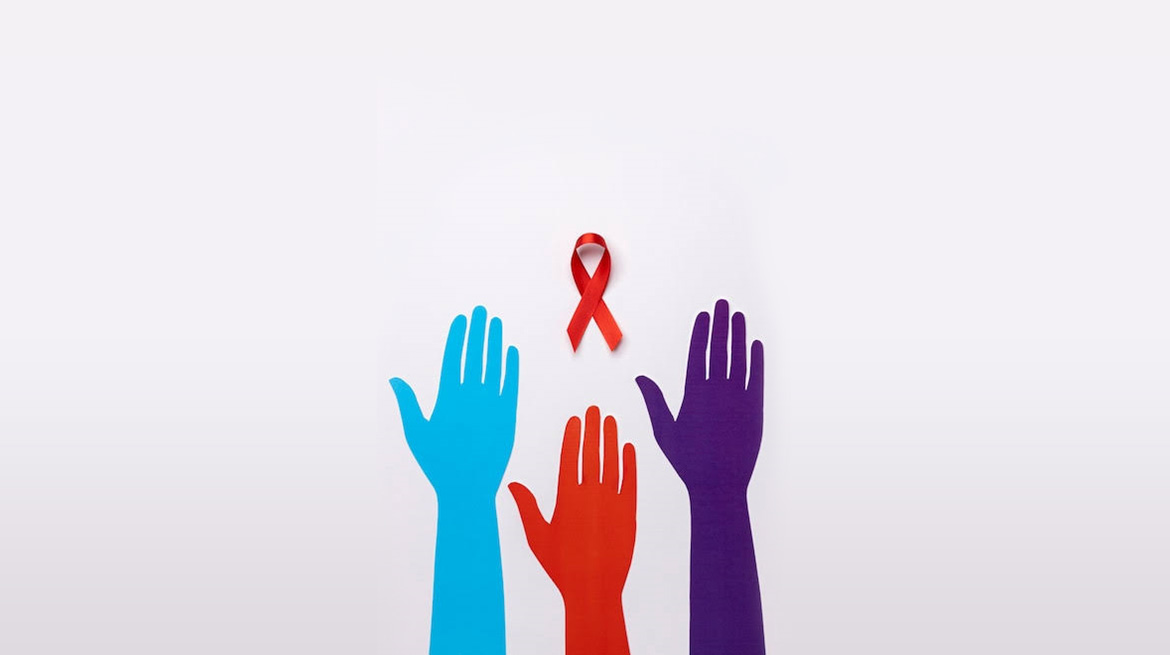As we unite to commemorate World AIDS Day, it’s the perfect moment to reflect on the strides we have taken in our relentless battle against HIV/AIDS. Last year, under the powerful banner of “Let Community Lead‼” we celebrated the incredible impact of community-driven efforts. We acknowledged that the lifeblood of every successful health initiative lies within the communities themselves. Their wisdom, resilience, and localized action have been essential in tackling the multifaceted challenges posed by HIV/ AIDS.
This year, as we embrace the theme “Take the Rights Path: My Health, My Rights”[1], we pivot towards ensuring that these invaluable community-led efforts are fortified by a robust framework of human rights. While communities continue to spearhead the charge, it is imperative that we support their initiatives by safeguarding the rights of every individual. This entails not only combating the virus but also addressing the pervasive stigma, discrimination, and inequalities that impede our progress.
In the tapestry of global progress, the thread of community empowerment runs strong and true. As we navigate the complexities of social change, the mantra of “Let Communities Lead” has served as a beacon, guiding us toward grassroots initiatives that harness local knowledge and passion. But to truly sustain and amplify these efforts, it is essential to overlay this community- driven approach with a framework that ensures justice, equity, and human rights-thus, we embark on “Charting a Path to Rights: Empowering Communities for Change.”
The Power of Community Leadership
At the heart of every transformative movement lies the community. These are the people who experience challenges first-hand and, as a result, hold the keys to unlocking practical and culturally relevant solutions. Community leadership is about recognizing and uplifting these voices, granting them the power to shape their own destinies.
Public Health Initiatives: The Role of Community Health Workers in Africa-
Community Health Workers (CHWs) in Africa have been pivotal in addressing the public health challenges of HIV/AIDS. These dedicated individuals, often from the local communities themselves, have been trained to educate others on practicing safe sex to prevent HIV transmission. They pass down this knowledge through oral traditions, stories, and hands-on teaching. CHWs also organize workshops and community meetings to discuss health issues, solve their quarries, and dispel myths and misconceptions about the diseases.
Integrating a Rights- Based Approach
While the foundation of community leadership is robust, it must be fortified with a rights-based approach to ensure inclusivity and fairness. This means every community-driven effort must be underpinned by the principles of human rights, ensuring that no one is left behind.
Core Principles:
Inclusion and Equity: Every voice counts. It is imperative that all community members, regardless of gender, age, disability, or socioeconomic status, are included in the decision- making processes.
Accountability: Ensuring that both community leaders and external partners uphold human rights and fulfill their commitments.
Transparency: Openness in planning, implementing, and evaluating initiatives is crucial for building trust and ensuring fair practices.
Empowerment: Providing communities with the necessary tools and knowledge to advocate for their rights and fully participate in their development.
The Synergy of Leadership and Rights
When we merge community leadership with a rights-based approach, the impact is profound. This synergy ensures that initiatives are not only effective but also just and sustainable. For instance, in education, community-led programs to improve school attendance can be strengthened by advocating for the right to free and compulsory education. Similarly, in healthcare, community health initiatives gain greater traction when backed by the assurance of the right to quality healthcare services for all.
Community initiatives in India aimed at improving school attendance have thrived when combined with advocacy for the right to education; ensuring schools are accessible, safe, and inclusive. Similarly, in rural Africa, community health workers have significantly enhanced healthcare access and outcomes by advocating for the right to health. Their efforts have secured better resources and support for their communities, demonstrating the powerful impact of combing grassroots initiatives with a rights-based approach.
Moving Forward Together
As we continue our journey, let’s build on the foundation laid by community leadership. Let’s ensure that every initiative is guided by the principles of human rights, creating a world where everyone has the opportunity to lead a healthy, fulfilling life. By taking the right path, we not only advance in our fight against HIV/AIDS but also move closer to a future where health and dignity are upheld for all.
Conclusion
Charting a path to rights through community empowerment is not just a strategy; it is a commitment to justice and equity. By embracing both community leadership and a rights-based approach, we can ensure that progress is inclusive, sustainable, and reflective of the true needs of the people. As we move forward, let us continue to empower communities and champion their rights, creating a world where every individual can thrive. By forging this path, we create not just a roadmap for change, but a legacy of empowered, resilient communities capable of leading the way towards a brighter, more equitable future.
References-
- https://www.who.int/campaigns/world-aids-day/2024; Health Topics, HIV/AIDS.




